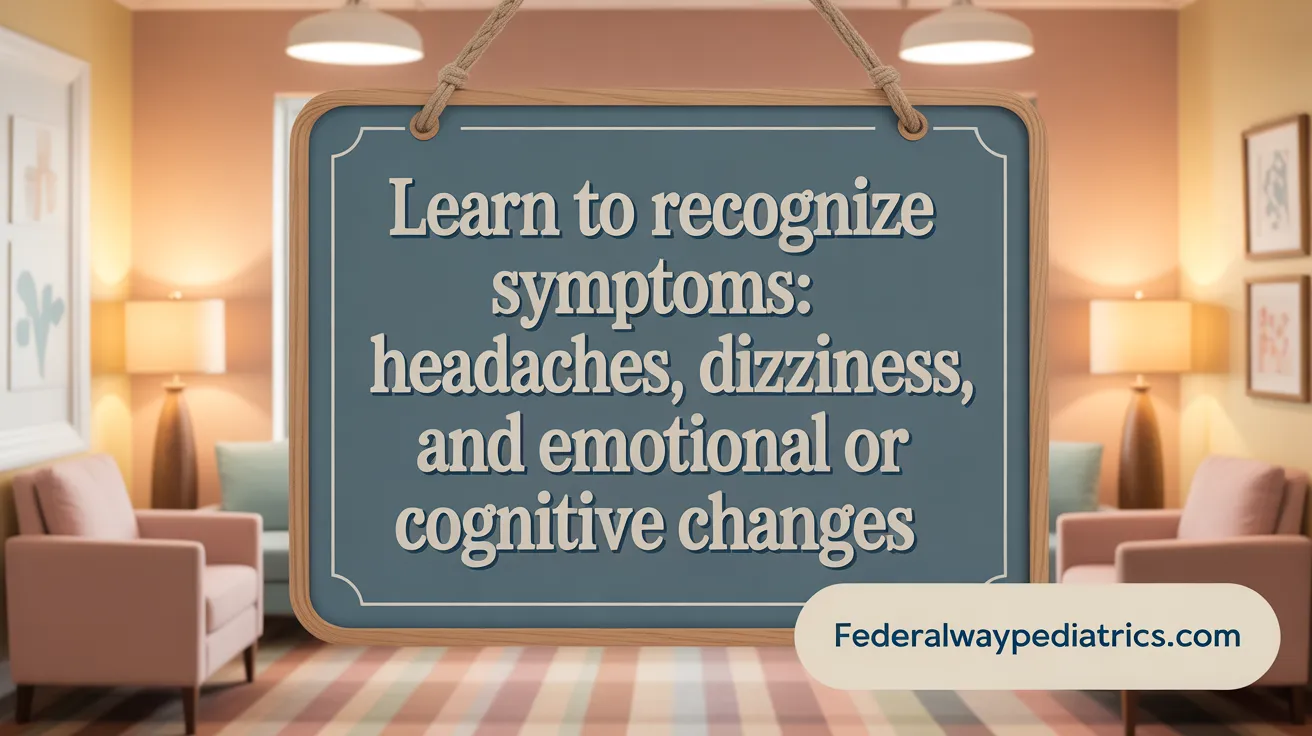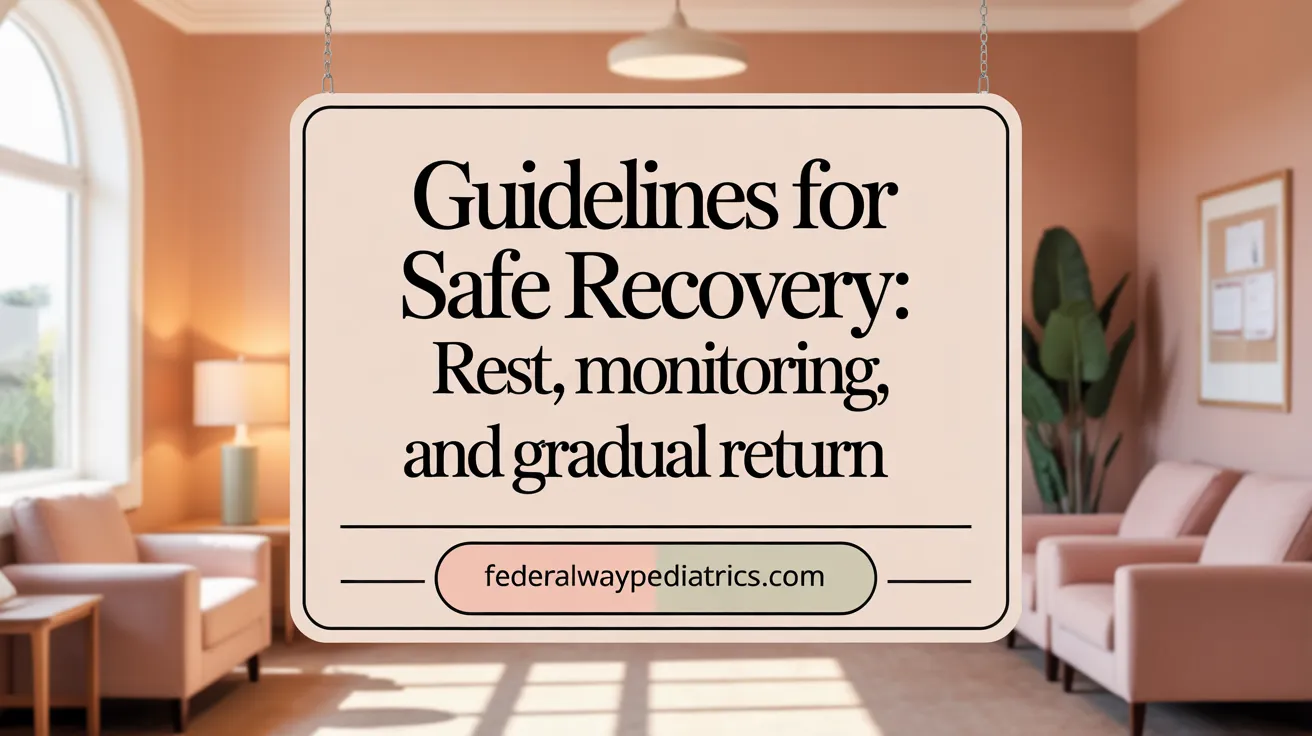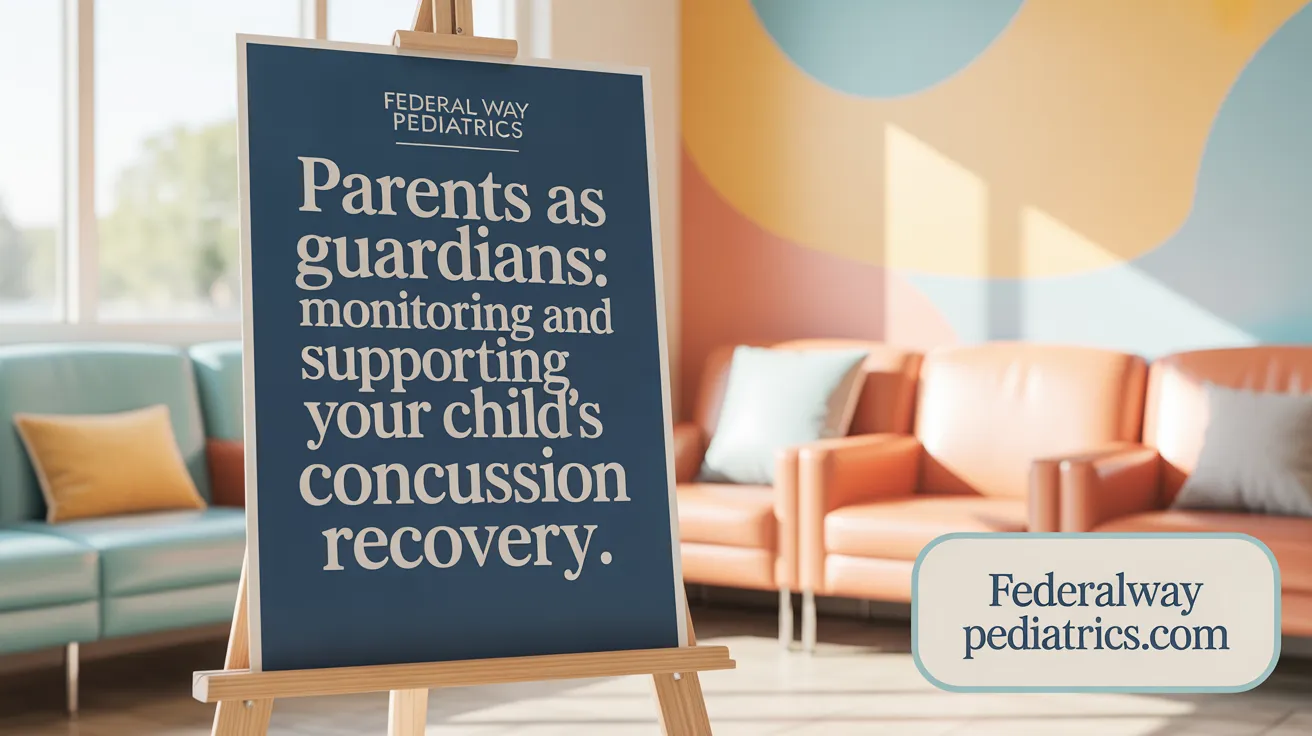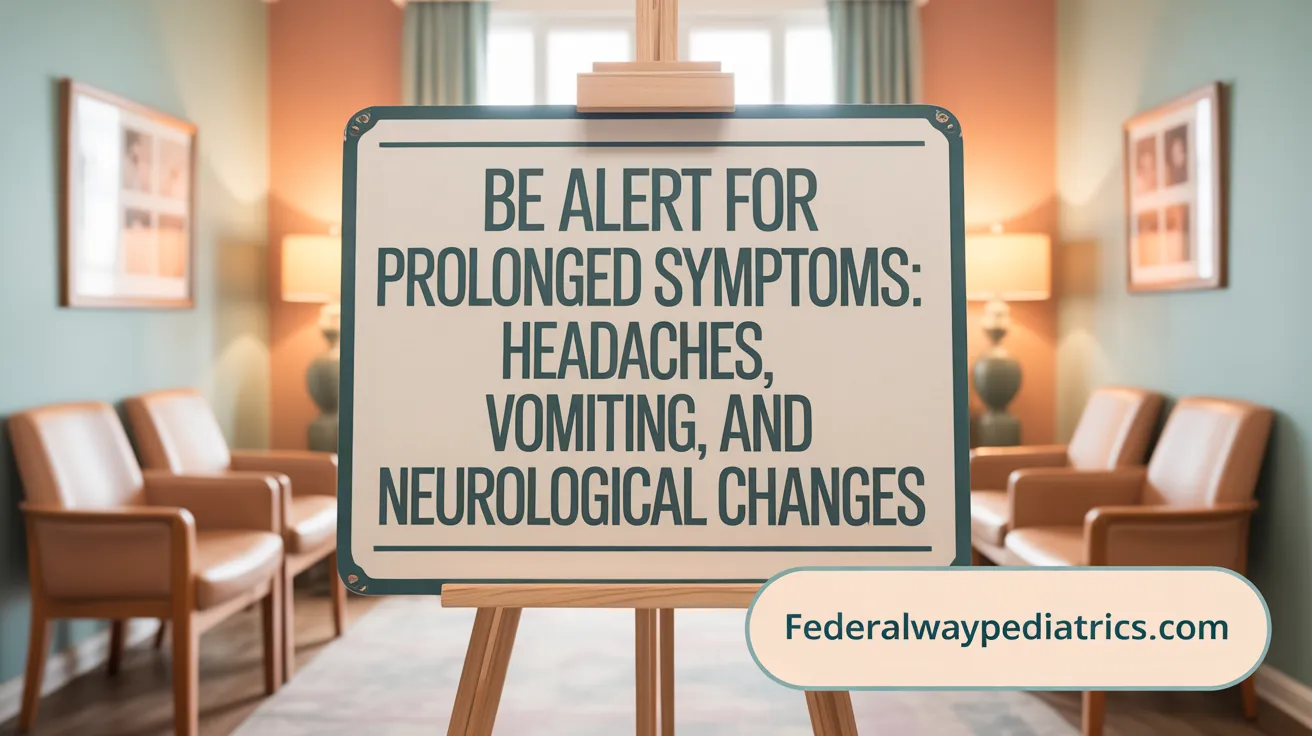Understanding the Impact of Concussions on Children
Concussions, often referred to as mild traumatic brain injuries, are a common injury in children caused by a blow or jolt to the head that disrupts normal brain function. Recognizing symptoms early and managing recovery properly is crucial for ensuring a child's safe return to everyday activities and long-term wellbeing. This article provides parents with vital information on concussion symptoms, diagnosis, recovery management, and prevention strategies to guide them through the recovery process effectively.
Recognizing Common Symptoms and Diagnosing Concussions in Children

What are the common symptoms of a concussion in children?
Children with a concussion often experience a variety of signs that can be physical, emotional, or cognitive. Physical symptoms typically include headaches, dizziness, nausea, or vomiting, and issues with balance or coordination. Some children may also report blurry vision or increased sensitivity to light and noise.
Cognitive symptoms involve feeling foggy, slowed down, difficulty concentrating, and memory problems, which can affect their ability to learn and perform school tasks.
Emotional and behavioral changes are common, such as irritability, mood swings, feeling sad or nervous, or becoming more emotional than usual. Sleep disturbances, including trouble sleeping or feeling excessively tired, may also occur.
Monitoring children for these symptoms is crucial, especially after a head injury. Seek medical evaluation if signs like repeated vomiting, loss of consciousness, or worsening confusion develop, as these may indicate a more serious condition requiring immediate care.
How is a concussion diagnosed in children?
Diagnosing a concussion in a child involves a thorough clinical process. Healthcare providers begin with a detailed medical history, including how the injury happened and what symptoms the child is experiencing.
The physical examination focuses on neurological functions such as balance, coordination, reflexes, and cognitive abilities like memory and concentration. Listening to the child's description of their symptoms helps in understanding the severity and progression.
Imaging tests, like a CT scan or MRI, are rarely necessary unless there are signs of more severe brain injury. These signs could include loss of consciousness longer than a few seconds, worsening confusion, or neurological deficits.
Most cases are diagnosed based on symptoms and clinical assessment. If symptoms continue or worsen, especially with signs of severe injury, further testing and specialist consultation might be needed to ensure proper recovery planning and rule out other injuries.
Guidelines for Managing Your Child’s Concussion Recovery

What are recommended guidelines for managing concussion recovery in children?
Children who experience a concussion need careful management to ensure a smooth recovery. It is essential to seek medical evaluation within the first 24 to 48 hours after the injury. Healthcare professionals can provide a precise diagnosis, identify any concerning symptoms, and develop an individualized care plan.
Once diagnosed, children should initially rest physically and mentally. This means avoiding strenuous activities, sports, computer use, video games, TV, and other cognitive demands that may worsen symptoms or slow healing. Light cognitive activities, such as listening to audiobooks or watching quiet TV, can be gradually reintroduced as symptoms improve.
Monitoring symptoms closely during the recovery period is vital. Parents and caregivers should watch for new or worsening symptoms, such as severe headache, vomiting, confusion, or unusual drowsiness, and seek immediate medical care if they occur.
As children recover, a gradual return to normal activities can be safely planned. This involves following a stepwise protocol where activity levels are increased in stages once symptoms have resolved entirely. No strenuous activity or sports should be resumed until the child has been medically cleared.
Educational support is crucial during recovery. Schools should provide accommodations like reduced workload, rest breaks, and a supportive environment to help children get back to their learning routines without overexertion.
Practicing adherence to health professionals' instructions and maintaining open communication ensures that children recover fully and without setbacks. Following these guidelines helps prevent further injury and promotes mental and physical well-being during the healing process.
Monitoring Symptoms: A Parent’s Role in Safe Recovery

How can parents monitor ongoing symptoms during a child's concussion recovery?
Parents play a vital role in ensuring their child's safe recovery by carefully observing their symptoms and behaviors after a concussion. In the initial 24 to 48 hours, it's important to watch for any signs that might indicate worsening or persistent symptoms such as headaches, dizziness, fatigue, irritability, or difficulty concentrating. These physical and cognitive signs can sometimes be subtle, especially since children may struggle to articulate exactly how they feel.
Behavioral changes are also significant indicators. Increased confusion, irritability, changes in sleep patterns—whether sleeping more or having trouble sleeping—nausea, blurry vision, or heightened sensitivity to light and noise should raise concern. Caregivers should keep a close eye during periods of rest and monitor for any unusual behaviors or physical complaints.
It’s helpful for parents to maintain a symptom diary, noting the frequency, severity, and any new developments. Limiting physical and screen activities and ensuring the child gets sufficient mental rest contribute to better recovery. Regular check-ins and providing a calm, supportive environment help the child recover more comfortably.
Parents should be vigilant for signs of worsening conditions, such as severe headaches, repeated vomiting, or difficulty waking. These are emergencies requiring immediate medical attention. If any such symptoms occur, parents should seek urgent care without delay.
Throughout the recovery process, it is essential to follow medical advice, support a gradual return to normal activities, and communicate regularly with healthcare providers about any changes or concerns. This close monitoring helps ensure the child's safety and promotes a smooth path to full recovery.
Identifying Complications and Prolonged Recovery Risks

What are the signs that indicate complications or a prolonged recovery from a concussion in children?
Parents and caregivers should be vigilant for signs that suggest a child’s recovery from concussion might be taking longer or that there could be complications. Persistent or worsening headaches are a common indicator that the brain has not healed fully. If the child experiences repeated vomiting, this is also concerning, as it can signal increased pressure in the brain or other serious issues needing urgent assessment.
Changes in consciousness or responsiveness, such as increased confusion, disorientation, or difficulty waking, can be signs of a more severe injury requiring immediate medical attention. Unusual eye movements or issues like convergence deficits—where the eyes have trouble working together—may also point to ongoing neurological problems.
Early signs that suggest a longer recovery include dizziness, episodes of loss of consciousness at the time of injury, and a history of previous concussions. Children with pre-existing conditions such as depression, anxiety, or migraines are more prone to having symptoms that last beyond the typical recovery period.
Most children recover within 2 to 4 weeks; however, if symptoms like cognitive impairment, emotional disturbances (including irritability or sadness), or visual and vestibular issues persist past this window, it indicates a prolonged recovery.
Worsening neurological symptoms—such as abnormal pupil responses, seizures, or increasing weakness or numbness—must be treated as urgent emergencies. These signs should prompt immediate medical evaluation to prevent further injury or complications.
In summary, ongoing symptoms, new neurological findings, or symptoms that worsen with time are red flags for complications or extended recovery, emphasizing the importance of close monitoring after a concussion.
Navigating Return to School and Daily Activities Post-Concussion
How should a child's return to school and daily activities be planned after a concussion?
Following a concussion, it is crucial to approach a child's return to school and daily routines with caution and careful planning. This process begins with a gradual, stepwise reintroduction of cognitive activities, starting with limited, symptom-free periods at home.
Initially, children should avoid strenuous mental tasks such as homework, computer use, texting, or video games, especially in the first few days post-injury. Light activities like watching TV or listening to audiobooks can be introduced gradually as symptoms improve. Once the child’s condition stabilizes and symptoms diminish significantly, they can cautiously resume academic activities.
A 'Return to Learn' plan is essential in guiding this process. Such plans are customized by healthcare providers and involve slowly increasing the duration and intensity of schoolwork, starting from short periods at home and progressing toward full days as tolerated.
School accommodations like reduced workload, longer testing times, rest breaks, and sensory environment modifications help manage symptom triggers and support the child's learning. This approach reduces frustration and prevents symptom worsening.
Effective communication among parents, teachers, school staff, and healthcare providers is vital. A dedicated management team ensures everyone is aligned on the child's recovery status and necessary adjustments.
Monitoring symptoms is ongoing, and the child should only resume high-risk activities, such as sports, once fully cleared by a healthcare professional. This cautious approach helps prevent complicating factors like second impacts and ensures a smoother recovery.
Most children can return to school within 1 to 2 days after injury if symptoms are mild and steadily improving. Still, the process requires individual tailoring based on symptom severity and overall health to promote a safe and effective recovery experience.
Understanding the Typical Recovery Timeline and Milestones
What is the typical timeline and milestones for children recovering from a concussion?
Most children with a concussion recover within a time frame of one to four weeks. During this period, symptoms such as headache, dizziness, and fatigue usually improve significantly, especially with proper care and following medical advice.
Recovery is a gradual process that follows a structured, stepwise approach led by healthcare providers. This approach includes six progressive stages, starting with rest and gradually increasing to full participation in school, physical activities, and sports.
One of the early milestones is that most children can return to school within just a few days—typically within 1 to 2 days—once their symptoms begin to lessen, and they can tolerate light activity. School return involves a tailored plan, gradually increasing cognitive load without exacerbating symptoms.
Physical activity is also reintroduced step-by-step, beginning with light exercises and advancing only after ensuring no symptoms reappear. Before resuming contact sports or high-risk activities, children must receive explicit medical approval, often after completing all stages of recovery.
Monitoring symptoms throughout recovery is essential. If symptoms persist beyond four weeks or worsen, children may require follow-up care, and their recovery plan can be extended or adjusted to meet individual needs.
In summary, while most children see marked improvements within 2 to 4 weeks, the process involves milestones such as returning to school, gradually resuming physical activities, and obtaining clearance for sports. Each child's journey is unique, with recovery times varying based on the severity of their concussion and their response to treatment.
Medical Follow-up and Healthcare Guidance for Post-Concussion Care
What medical follow-up and healthcare guidelines are advised after a child suffers a concussion?
Following a concussion, it is crucial for children to receive an initial medical evaluation within 24 to 48 hours. This assessment should include a thorough physical and neurological exam to evaluate the severity of the injury and identify any immediate concerns.
During the recovery phase, children should be closely monitored for symptoms such as headaches, dizziness, or behavioral changes. Rest, both physical and mental, remains a cornerstone of initial care. This means limiting activities like schoolwork, screen time, and physical exertion, and ensuring proper sleep, hydration, and nutrition.
As symptoms improve, light cognitive activities like listening to audiobooks or watching TV can be gradually reintroduced. The process should be carefully managed, increasing activity levels step by step under medical supervision. Children are not cleared to return to sports or strenuous activities until they are symptom-free and have received approval from a healthcare professional.
A structured return-to-play protocol is vital, usually spanning at least a week, comprising multiple steps of gradually increasing activity intensity. Schools may also implement accommodations such as reduced coursework or extended testing schedules to support the child's learning during recovery.
Continued follow-up care is essential, especially if symptoms persist beyond a few weeks. Healthcare providers may recommend further testing or specialist referrals if recovery is delayed or symptoms worsen.
It is critical for parents and caregivers to watch for warning signs that require immediate medical attention, such as severe headaches, repeated vomiting, worsening confusion, seizures, or unusual drowsiness. Recognizing and responding promptly to these signs can prevent serious complications and support a safe recovery trajectory.
Effective Prevention and Supporting Well-being During Recovery
What are effective prevention and safety measures to reduce concussion risk in children?
Preventing concussions involves a combination of safety practices and awareness. Ensuring children wear properly fitted helmets during activities like biking, skateboarding, skiing, and contact sports is essential. Helmets should be appropriate for the activity and fit snugly without discomfort.
Childproofing the home also plays a pivotal role; installing window guards, stair gates, and supervising children can help prevent falls—the leading cause of childhood concussions. Using soft ground surfaces such as mulch or rubber mats under playground equipment can absorb impact and lessen injury severity.
In sports, enforcing safety rules and promoting education about concussion symptoms help prevent and quickly identify injuries. Limiting high-risk practices, like heading in young soccer players or participating in full-contact practices without proper precautions, reduces sport-related concussions.
Car safety measures are equally important. Properly using car seats, booster seats, and seatbelts significantly decreases the risk of head injuries during vehicle accidents.
Creating an overall culture of safety—through coaching, parental oversight, and injury awareness—ensures prompt recognition and management of concussions, decreasing their occurrence and impact.
How can parents support their child's physical and cognitive well-being during concussion recovery?
Parents play a crucial role in supporting recovery. They should encourage adequate rest, which is vital for healing. Light physical activities like walking or stationary biking can be gradually introduced once symptoms subside, helping promote recovery without risking reinjury.
Monitoring symptoms diligently and maintaining close contact with healthcare providers ensures that recovery progresses safely. Following a structured return-to-activity plan—progressing from rest to light activity, then to more demanding physical and cognitive tasks—is essential.
Supporting emotional well-being is equally important. Providing patience, reassurance, and understanding helps children cope with the emotional challenges that may accompany concussion symptoms.
Ensuring the child gets enough sleep, balanced nutrition, and regular routines supports overall recovery. Parents should also coordinate with schools to facilitate a gradual return to academic activities, adjusting workloads and allowing rest breaks as necessary.
Above all, avoiding premature return to sports and strenuous activities until symptoms resolve and a healthcare professional clears the child is crucial. This holistic approach—combining rest, gradual activity reintroduction, emotional support, and medical guidance—optimizes recovery outcomes and helps children regain their full health.
Key Takeaways for Parents Supporting Concussion Recovery
Concussions in children require careful attention and a coordinated approach among parents, healthcare providers, and schools. Recognizing the wide range of symptoms, understanding the diagnostic process, and adhering to recommended recovery guidelines can help ensure a safe healing journey. Parents’ involvement in monitoring symptoms, supporting gradual return to cognitive and physical activities, and advocating for appropriate school accommodations is critical. Preventative measures and ongoing education further protect children from future injury. With proper care, most children recover fully within weeks, returning to their normal lives stronger and well-informed about brain health.
